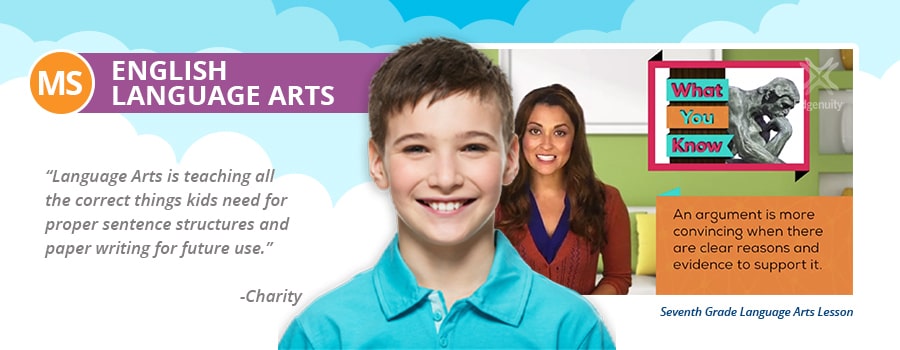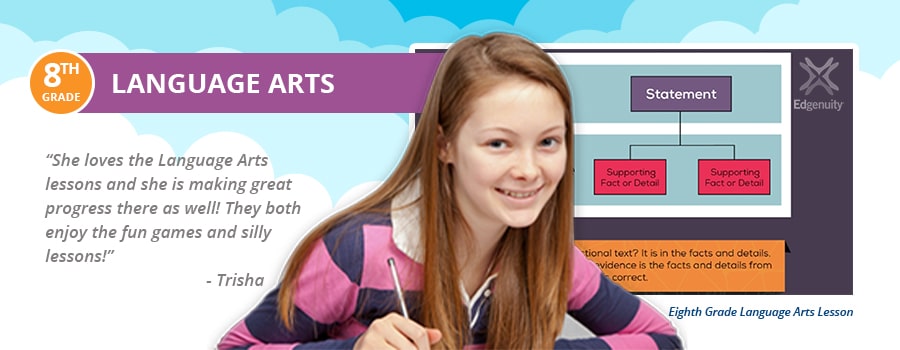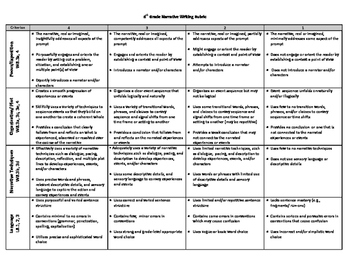CCSS.ELA-Literacy.W.8.3.c - Use a variety of transition words, phrases, and clauses to convey sequence, signal shifts from one time frame or setting to another, and show the relationships among experiences and events. This file contains a complete set of writing checklists/rubrics for 8th grade narrative, argumentative, and informative/expository writing. Each checklist includes the main writing standard, as well as the standards that fall under the main writing standard. All standards are written using the sam. Subpages (19): 6th Grade Writing 7th Grade Writing 8th Grade Writing Citations Essay Formatting & Point Deductions Grafting Quotes NHD resources Online Writing Lab Plagiarism Info/Help Publishing Strategies: conclusions Strategies: dialogue Strategies: editing Strategies: introductions Strategies: Note Taking Strategies: sentences Strategies. Jun 26, 2020 - Explore Connie Stringfellow's board 'ELA lesson plans', followed by 152 people on Pinterest. See more ideas about ela lesson, ela lesson plans, school reading.
Grade 8 FSA ELA Writing Rubric The FSA ELA Writing Rubric is a scoring tool that describes the characteristics of a written response for each score point within each domain. The rubric may assist educators with evaluating the strengths and weaknesses of student responses based on the text-based writing prompt/task included in.

CCSS.ELA-Literacy.W.8.3.a - Engage and orient the reader by establishing a context and point of view and introducing a narrator and/or characters; organize an event sequence that unfolds naturally and logically. |

CCSS.ELA-Literacy.W.8.3.b - Use narrative techniques, such as dialogue, pacing, description, and reflection, to develop experiences, events, and/or characters. |
CCSS.ELA-Literacy.W.8.3.c - Use a variety of transition words, phrases, and clauses to convey sequence, signal shifts from one time frame or setting to another, and show the relationships among experiences and events. |

CCSS.ELA-Literacy.W.8.3.d - Use precise words and phrases, relevant descriptive details, and sensory language to capture the action and convey experiences and events. |
CCSS.ELA-Literacy.W.8.3.e - Provide a conclusion that follows from and reflects on the narrated experiences or events. |
Authors: National Governors Association Center for Best Practices, Council of Chief State School Officers
Title: CCSS.ELA-Literacy.W.8.3 Write Narratives To Develop Real Or Imagined Experiences... Writing - 8th Grade English Language Arts Common Core State Standards
Publisher: National Governors Association Center for Best Practices, Council of Chief State School Officers, Washington D.C.
Copyright Date: 2010
(Page last edited 10/08/2017)
- A chart of the transitional devices - Also called conjunctive adverbs or adverbial conjunctions
- Effective Conclusions - Article with ideas for concluding a speech
- Evaluating Supporting Details in Writing - Scroll down to the Detail section and evaluate the details in your writing.
- Five Effective Strategies to Conclude a Speech - Speech conclusion tutorial including strategies and speech topics for an effective way to conclude your public speaking speech
- Making an Argument: Effective use of Transition Words - Lesson plan; 'explore and understand the use of transition words in context and write their own persuasive essay using transition words'
- Plan Your Conclusion - Four major components to a good conclusion
- Preparing & Delivering Effective Presentations: Helpful Hints - This twenty slide show includes an Audience Bill of Rights
- Purposes in Writing - Explanation of various purposes from writers' point of view
- Transitional Devices - Transitional guides are connectives (symbols, words, phrases; sometimes whole sentences and paragraphs) that make possible a smooth 'passing over' from one idea to the next.
- Transitional Devices (Connecting Words) - Brought to you by the Purdue University Online Writing Lab
- Understanding different purposes - Communicate successfully to your audience
- Using Transitions - Interactive PowerPoint show by Ruth Luman
8th Grade English Language Arts - Writing Standards

8th Grade Ela Test Prep

To work on eighth grade writing standards, click on the numbers below to visit pages of internet resources for each of the learning standards.
Checks for Understanding are at the top of this page. Scroll down to find internet resources related to the State Performance Indicators (SPIs).
7th Grade Ela Writing Standards
Checks for Understanding (Formative/Summative Assessment) | |
| 0801.3.1 | Modes and Genres - Write in a variety of modes and genres, including description, narration, exposition, persuasion, literary response, personal expression, and imaginative. |
| 0801.3.2 | Prompts - Practice writing to expository prompts within a specified time. |
| 0801.3.3 | Create Work-Related Texts - Texts such as instructions, directions, letters, memos, and reports. |
| 0801.3.4 | Topic - Develop focused, appropriate, and interesting topics for writing. |
| 0801.3.5 | Thesis - Create a thesis statement and include relevant facts, details, reasons, and examples that support the thesis. |
| 0801.3.6 | Needs of Audience - Develop relevant details or reasons in a manner that meets the needs of the audience and purpose. |
| 0801.3.7 | Appropriate Structures - Organize writing using structures appropriate for the topic, and meet the needs of the audience (e.g., If using an anecdote to provide an example, use chronological order with sufficient time signals for the reader to follow easily). |
| 0801.3.8 | Organization - Use appropriate and effective words and phrases to indicate the organizational pattern (e.g., problem-solution, with order of steps necessary indicated in the solution). |
| 0801.3.9 | Text Features - Use text features (e.g., headings, subheadings, formatting) as appropriate to signal simple relationships between ideas. |
| 0801.3.10 | Appropriate Vocabulary - Use appropriate vocabulary, sentence, and usage to distinguish between formal and informal language. |
| 0801.3.11 | Figurative Language - Use strong verbs and figurative language (e.g., metaphors, similes) for emphasis or creative effect as appropriate to the purpose. |
| 0801.3.12 | Sentence Structure - Use correct sentence structures that are appropriate for audience and purpose. |
| 0801.3.13 | Syntactic Structures - Incorporate some variety of syntactic structures for effect when appropriate (e.g., modifying phrases, parenthetical expressions). |
| 0801.3.14 | Tone - Edit to craft a tone that is appropriate for the topic and audience, and supports the purpose. |
| 0801.3.15 | Point of View - Use language that conveys the writer's point of view. |
| 0801.3.16 | Other Sources - When other sources are used or referenced (such as in research, informational essays, or literary essays) adhere to the following: |
| 0801.3.17 | Notes - Generate notes on text, and identify main and supporting ideas. |
| 0801.3.18 | Edit - Edit writing for mechanics (punctuation, capitalization), spelling, grammar (e.g., consistent verb tense, noun and pronoun agreement). |
| 0801.3.19 | Revise - Drawing on reader's comments, revise papers to focus on topic or thesis, develop ideas, employ transitions, and identify a clear beginning and ending. |
| 0801.3.20 | Writing Rubric - Demonstrate confidence in using the Writing Assessment Rubric while evaluating one's own writing and the writing of others. |
| 0801.3.21 | Software - Use relatively basic software programs (e.g., Word, PowerPoint) to write more challenging texts and create graphics to present ideas visually and in writing. |
| 0801.3.22 | Publication - Identify and explore opportunities for publication (e.g., local/national contests, Internet web sites, newspapers, periodicals, school displays). |
State Performance Indicators | |
| SPI 0801.3.1 | Purpose - Identify the purpose for writing (i.e., to inform, to describe, to explain, to persuade). |
| SPI 0801.3.2 | Audience - Identify the targeted audience for a selected passage. |
| SPI 0801.3.3 | Appropriate Thesis - Select an appropriate thesis statement for a writing sample. |
| SPI 0801.3.4 | Coherent Order - Rearrange multi-paragraphed work in a logical and coherent order. |
| SPI 0801.3.5 | Transitions - Select appropriate time-order or transitional words/phrases to enhance the flow of a writing sample. |
| SPI 0801.3.6 | Supporting Sentences - Choose the supporting sentence that best fits the context and flow of ideas in a paragraph. |
| SPI 0801.3.7 | Irrelevant Sentences - Identify sentences irrelevant to a paragraph's theme or flow. |
| SPI 0801.3.8 | Vivid Words - Select vivid words to strengthen a description (adjective or adverb) within a writing sample or passage. |
| SPI 0801.3.9 | Illustrations - Select illustrations, explanations, anecdotes, descriptions and/or facts to support key ideas. |
| SPI 0801.3.10 | Title - Select an appropriate title that reflects the topic of a written selection. |
| SPI 0801.3.11 | Mode - Identify individual written selections as technical, narrative, persuasive, and/or descriptive in mode. |
| SPI 0801.3.12 | Graphic Organizer - Complete a graphic organizer (i.e., clustering, listing, mapping, webbing) with information from notes for a writing selection. |
| SPI 0801.3.13 | Format - Select the most appropriate format for a work-related text. |
| Review Help | Resources to help review Eighth Grade English Language Arts standards |
Search Internet4Classrooms
Nys 8th Grade Ela Exam
Internet4classrooms is a collaborative effort by Susan Brooks and Bill Byles.